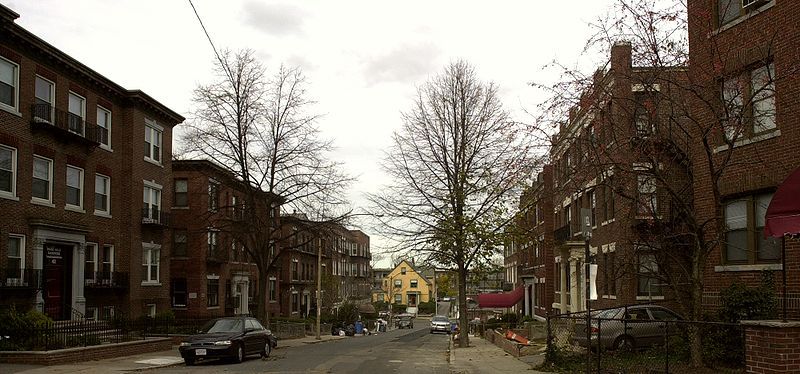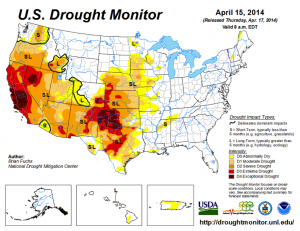In the United States, the traditional approach to health care has focused resources on treating people when they are sick rather than paying to keep people healthy. Once people are sick, they have the added trouble of finding affordable treatment. Massachusetts has been heralded for being at the forefront of national health reform; their 2006 health care reform not only laid out the framework for Obamacare, but a recent study has also shown that it has a proven impact on health. Now, the state has a chance of paving the way for a new model of health care, with a focus on prevention. For many low-income and minority residents in Boston that are suffering disproportionately from preventable conditions such as asthma, could this grant be the solution they are looking for?
Monthly Archives: May 2014
Making Moves Towards Healthier Homes

When the City of Boston passed its Rental Inspection Ordinance in December 2012, Mayor Thomas M. Menino issued a statement saying, “Landlords must be held responsible when it comes to providing safe and healthy housing for their tenants.” He was referring to the unhealthy living environments that fall on many city tenants when landlords neglect to request city housing inspections. This negligence leads to a higher prevalence of health hazards such as asthma and lead poisoning. Liz Connolly and Katherine Tanefis, of Boston’s non-profit, Health Resources in Action (HRIA), have been instrumental in promoting this protective rental policy. It is not an easy mission. Continue reading Making Moves Towards Healthier Homes
20 Years Later: Moving Forward With Environmental Justice in Obama’s Climate Action Plan

Twenty years ago, on February 11, 1994, President Clinton signed Executive Order 12898. Under the order, the federal government was told to direct their attention to the unequal amount of pollution being borne by minority and low-income communities across the country. To date, the results of “The Environmental Justice (EJ) Order” have fallen short of many of the hopes and expectations of its champions. Though there have been vast improvements in the attention given to important environmental issues under the Obama administration, the release of Obama’s Climate Action Plan last fall shows that there remains a disconnect between talking about environmental justice and achieving it. In honor of EO 12898’s 20th Anniversary, let us ask the current administration to demonstrate its commitment to the goals of the order by ensuring the inclusion of EJ communities in today’s climate policy. Continue reading 20 Years Later: Moving Forward With Environmental Justice in Obama’s Climate Action Plan
It’s not all cacti: Converting from green lawns to California-friendly landscapes

According to the United States Drought Monitor, as of April 15, the state of California’s temperatures were 9-12 degrees above normal, which contributed to the loss of half of the water contained in the state’s snowpack in a single week. Overall, the majority of the state was indicated to be in “extreme” and “exceptional” drought. Such levels of intense drought haven’t existed in the state since 2000.
As time goes on, these conditions are not projected to get any better as climate change continues. In fact, they are going to get worse. Water supplies throughout California have already decreased significantly in the current drought, which has put several cities on tight water use regulations. As a result of climate change increasing the frequency and severity of these droughts, combined with population growth, freshwater resources are being depleted faster than nature can replenish them. With projections like these something needs to be done to protect and conserve the region’s most important resource: its freshwater.
When it comes to water conservation in California there are two main areas of focus: agricultural and urban consumption. What few people know is that conservation priorities vary from region to region. For example, in looking at the state as a whole, agriculture consumes 77% of all freshwater, meaning conservation should be focused on cropland. However, looking at southern California specifically, agriculture only consumes around 16%, while urban residential consumption is around 54% and the rest is commercial or industrial use. This is the case because the majority of the state is covered in millions of acres of agricultural land, but a very large portion of the state’s population is concentrated in the south.
Looking at the southern California region, water conservation has been, and should continue to be, focused on urban residential consumption. The goal should be to change individual user practices to be compliant with a semi-arid region where there is little water availability and high temperatures.
Due to their similar climates, a study was done in 2011 comparing water consumption in Australia and California. It indicated that Australians consume half as much water as Californians because of their strict conservation regulations. One of the conservation techniques they focus on is outdoor water restrictions, such as limiting watering to between 8:00 pm and 10:00 am and encouraging the transition to less water intensive landscapes. Australia also encourages residents to implement rainwater tanks, which would not be affected by any watering restrictions, to take care of their outdoor needs. A big reason these efforts are so effective is because they are in place even when water is abundant. Australia is learning to live with their climate by changing their practices.
Similarly, the study found that the majority of water consumption in California was for outdoor uses, and therefore determined that California could greatly benefit from following the lead of Australian conservation.
This isn’t to say that California has not made any efforts. The state has made great strides in improving water conservation. One such technique they implemented was the “Cash in your lawn” campaign in 2009. The campaign entices residents to replace their lawns with California-friendly, drought-resistant landscaping (contrary to popular belief, not all drought resistant, native plants are cacti) by paying them $1 for every square foot they convert. In doing this, the Los Angeles Department of Water and Power (LADWP) hopes to save 70% of the annual water used to maintain a healthy lawn. The program had some success over the first couple of years, but to improve these results, last year LADWP raised the rebate to $2 for every square foot converted.
So far, the LADWP has replaced around 1.55 million square feet of grass. They expect that number to continue to increase because of the increased rebate offer, along with an increasing interest in conservation as climate change effects become more severe and known, it is predicted that more and more people will be jumping on the bandwagon.
Ultimately, the southern California culture needs to change. California-friendly landscaping needs to become the norm and green lawns the (bad) exception. Underneath all of the green lawns, the West is still a desert. Climate change is making that clear with increased droughts and decreased water availability. The summers are getting warmer and snow is falling less, and the drought monitor is going to grow redder and redder as humans continue on business as usual. Humans and water are what created the grand civilization in the West, but living by nature’s rules is what is going to keep us here.